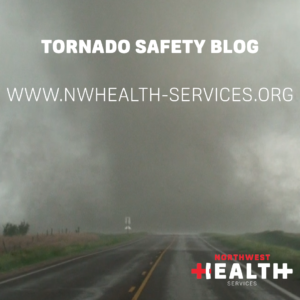 How Should You Prepare for a Tornado?
How Should You Prepare for a Tornado?
Already! Can you believe it? In fact, tornado season hit the midwest a little early this year after last week’s storms which passed through on Monday evening producing multiple tornadoes, hard rain, hail and damage to the center of the country were said and done with. This leaves us to something that we should be doing every year. Reviewing and preparing our tornado safety plans.
Before A Tornado
Before tornado season hits, it’s important to sit down with your family or friends if you have roommates and design a safety plan in case of a tornado. According to ready.gov you should follow these steps before a tornado:
- To begin preparing, you should build an emergency kit and make a family communications plan.
- Listen to NOAA Weather Radio or to commercial radio or television newscasts for the latest information. In any emergency, always listen to the instructions given by local emergency management officials.
- Be alert to changing weather conditions. Look for approaching storms.
- Look for the following danger signs:
- Dark, often greenish sky
- Large hail
- A large, dark, low-lying cloud (particularly if rotating)
- Loud roar, similar to a freight train.
- If you see approaching storms or any of the danger signs, be prepared to take shelter immediately.
Facts About Tornadoes
- They may strike quickly, with little or no warning.
- They may appear nearly transparent until dust and debris are picked up or a cloud forms in the funnel.
- The average tornado moves Southwest to Northeast, but tornadoes have been known to move in any direction.
- The average forward speed of a tornado is 30 mph, but may vary from stationary to 70 mph.
- Tornadoes can accompany tropical storms and hurricanes as they move onto land.
- Waterspouts are tornadoes that form over water.
- Tornadoes are most frequently reported east of the Rocky Mountains during spring and summer months.
- Peak tornado season in the southern states is March through May; in the northern states, it is late spring through early summer.
- Tornadoes are most likely to occur between 3pm and 9pm, but can occur at any time.
Important Terms
Tornado Watch – Tornadoes are possible. Remain alert for approaching storms. Watch the sky and stay tuned to NOAA Weather Radio, commercial radio or television for information.
Tornado Warning – A tornado has been sighted or indicated by weather radar. Take shelter immediately.
Taking Cover
If you’re unable to reach a safe location or follow through with your safety plan before the tornado hits, then look for the closest place to take coverage. Places of coverage include:
- Your basement
- Atop a concrete slab-on-grade foundation or garage floor.
- An interior room on the first floor.
If you’re outside and have no buildings located near you:
- Take cover in a stationary vehicle. Put the seat belt on and cover your head with your arms and a blanket, coat or other cushion if possible.
- Lie in an area noticeably lower than the level of the roadway and cover your head with your arms and a blanket, coat or other cushion if possible.
In all situations:
- Do not get under an overpass or bridge. You are safer in a low, flat location.
- Never try to outrun a tornado in urban or congested areas in a car or truck. Instead, leave the vehicle immediately for safe shelter.
- Watch out for flying debris. Flying debris from tornadoes causes most fatalities and injuries.
As tornado season continues to cross our path (pun intended!) it’s important to remember all of these safety tips as it could mean your life. We encourage you to take this seriously and talk it over with your family and close friends. It never hurts to be prepared.
As always, have a wonderful day!



Corey Myers is the Outreach & Enrollment Specialist for Northwest Health Services and works with healthcare professionals to provide important health information.
